The Brutalist volumes of London’s The Store X are brought to life with 21 polyphonic video artworks for new exhibition Strange Days: Memories of the Future.
Installations by John Akomfrah, Kahlil Joseph and Ragnar Kjartansson draw visitors into the building’s subterranean depths. The show, presented by The Store X and New York’s New Museum, is an anthology of video art shown in the latter over the last ten years. It doubles as a short history of works that have redefined and transformed the way artists imagine video and cinema today. Many are making their UK debut.
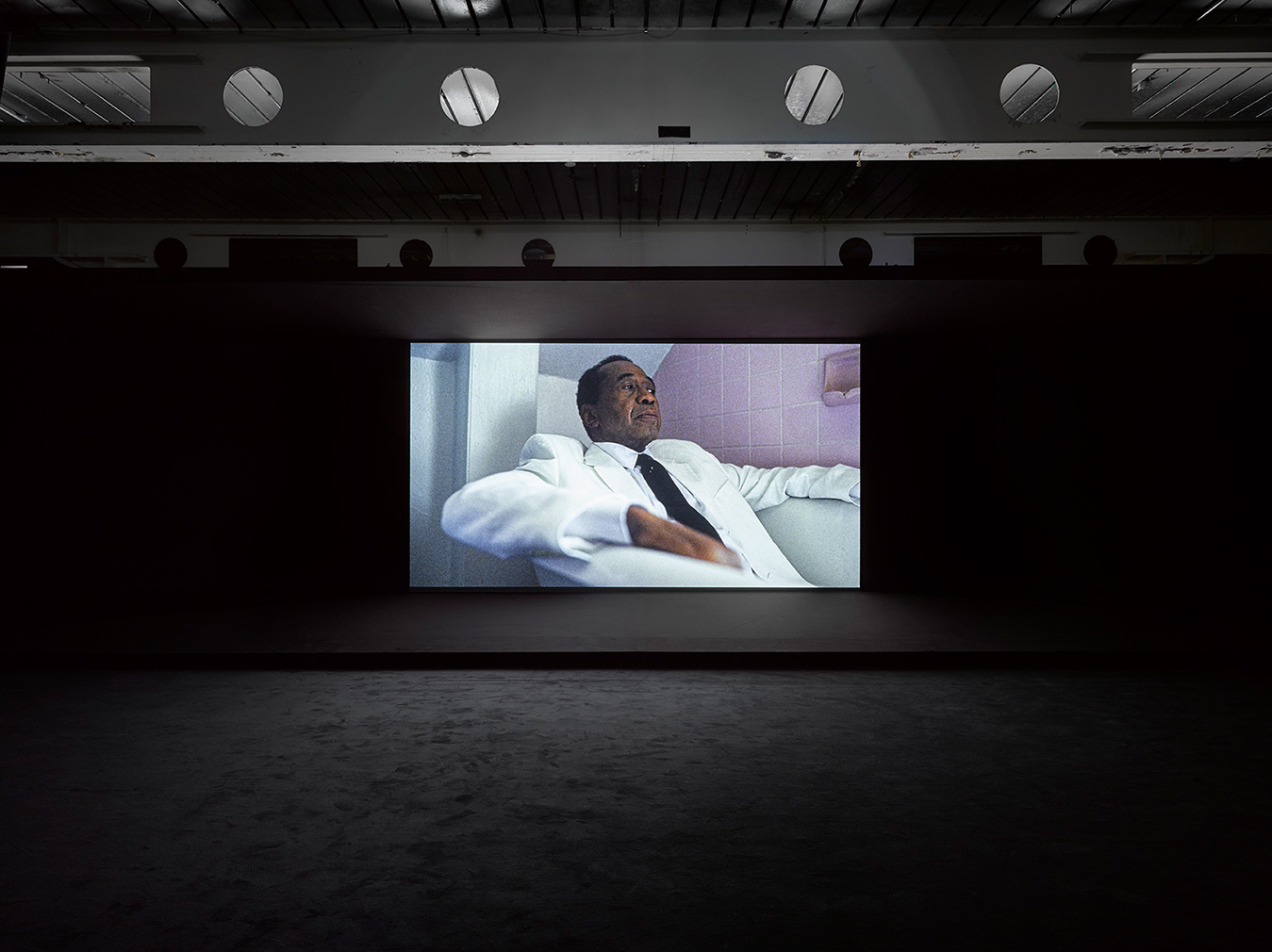
‘[The building’s underground spaces] seemed particularly appropriate to the crepuscular atmospheres of some of the works in the exhibition,’ explains curator Massimiliano Gioni, Edlis Neeson Artistic Director at the New Museum. ‘We tried to treat the space as a kind of continuous subjective view, like in those video games where you walk into a tunnel and space seems to develop as you advance.’
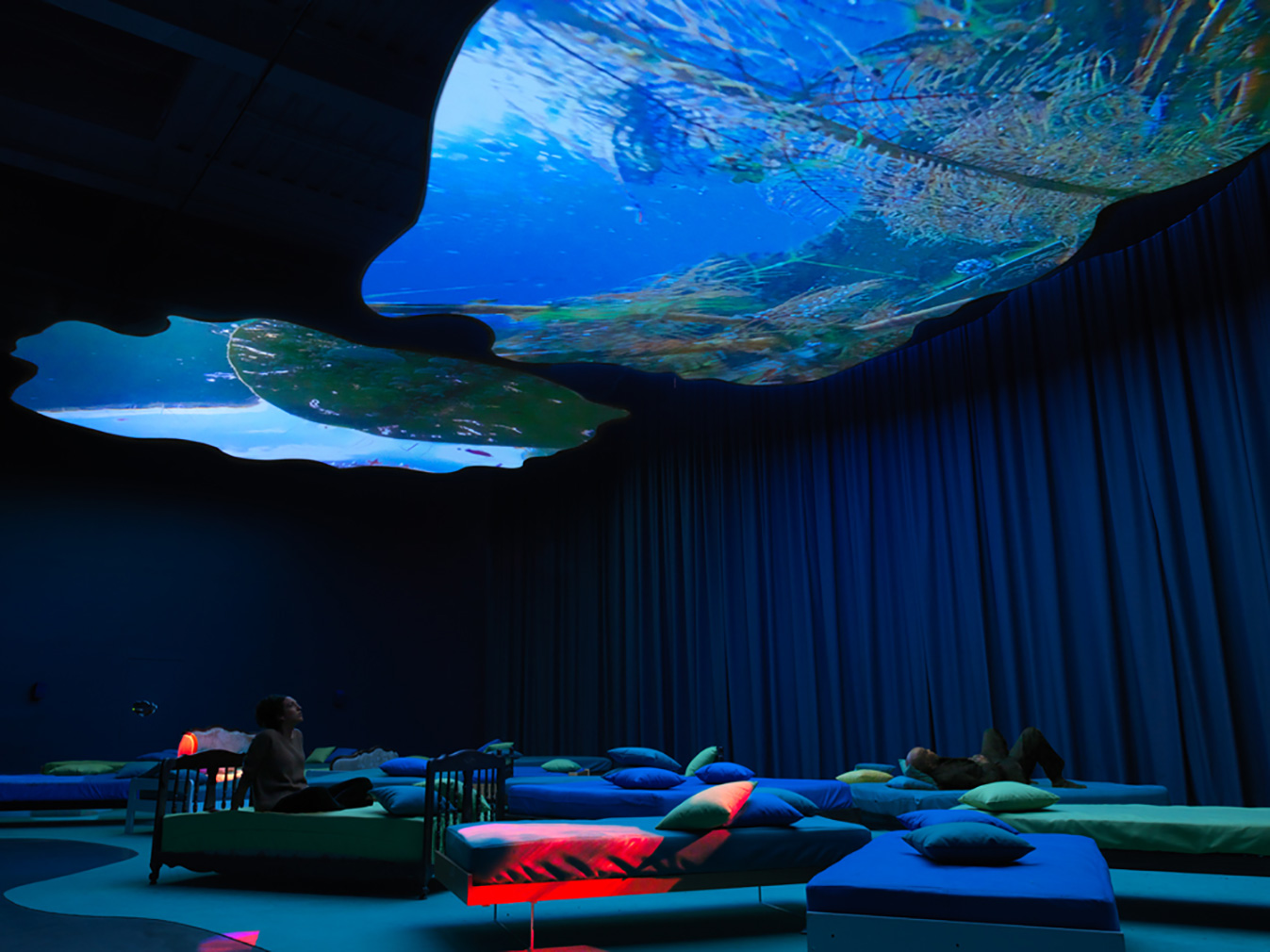
While roaming the building you can lie back and relax on beds beneath Pipilotti Rist’s ‘4th Floor to Mildness’, shot largely under water and projected onto video screens hanging overhead. Further below you’ll find the mesmeric, three-channel ‘Vertigo Sea’, by our book collaborator John Akomfrah. His epic scenes of waves and wildlife are juxtaposed with images of political violence in an installation inspired by Nigerian migrants’ perilous voyage across the sea.
You can lose yourself in some 11 hours of footage in the show (running until 9 December), which culminates with Ragnar Kjartansson’s epic ‘A Lot of Sorrow’, featuring a six-hour performance by rock band The National at MoMA P.S.1 in New York.
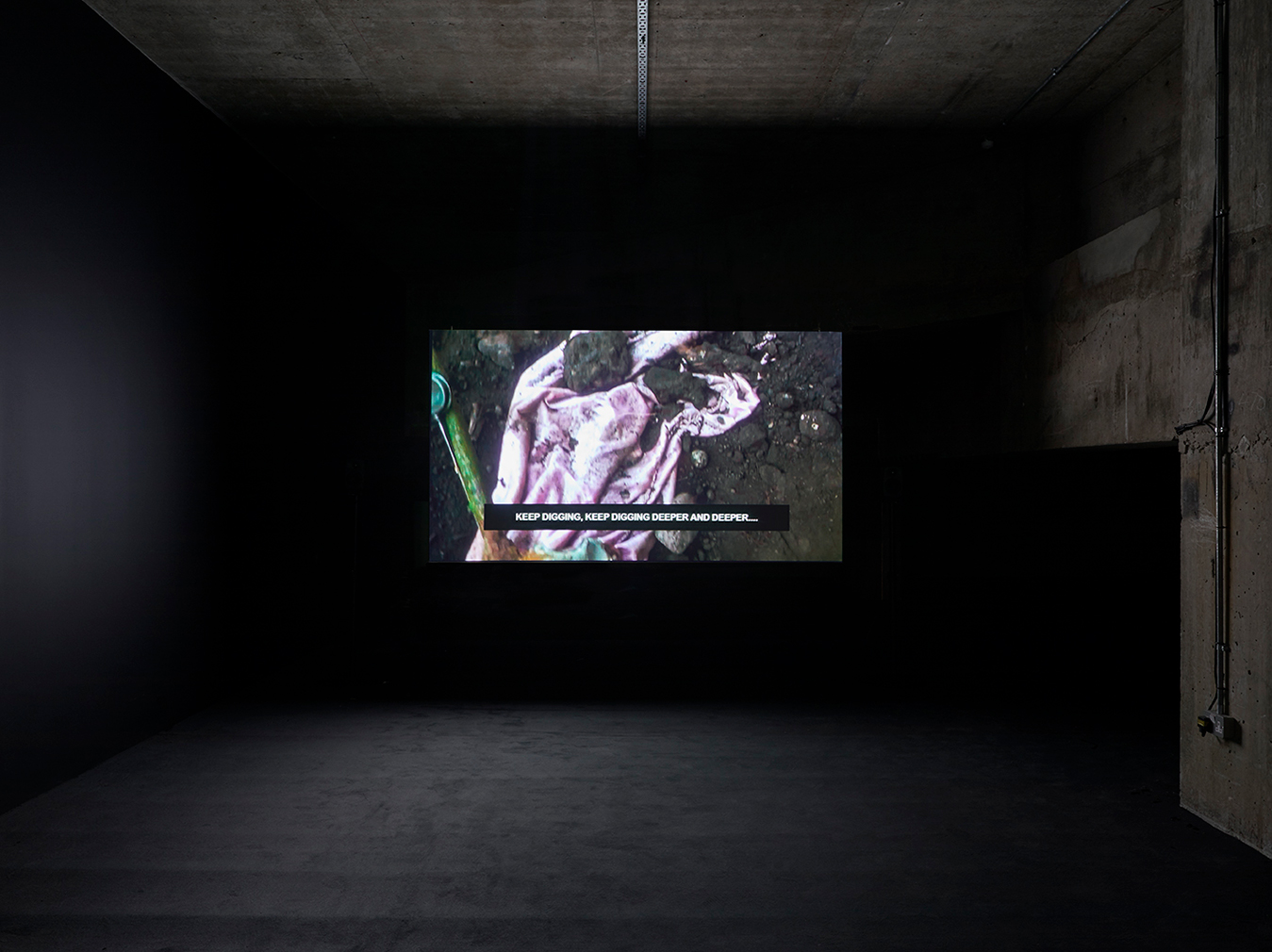
In this extract from the exhibition’s accompanying book, Massimiliano Gioni speaks to the New Museum’s Francesca Altamura about the show’s Piranesian experience and explains how the past and future come together in the works.
Francesca Altamura: How did the collaboration with The Store X and The Vinyl Factory begin?
Massimiliano Gioni: We first collaborated on the coproduction of Kahlil Joseph’s piece ‘Fly Paper’, which we showed at the New Museum in 2017. Joseph was also one of the artists featured in The Infinite Mix, the great exhibition of video and sound works curated by Ralph Rugoff and the Hayward Gallery in collaboration with The Vinyl Factory at The Store X in 2016. It seemed like a natural evolution to present Joseph’s new film in London, and in a sense Strange Days: Memories of the Future developed around that piece, looking at artists and works that explored similar atmospheres. I think The Store X also liked the idea of a new collaboration with a museum, particularly one that typically doesn’t have a presence in London.
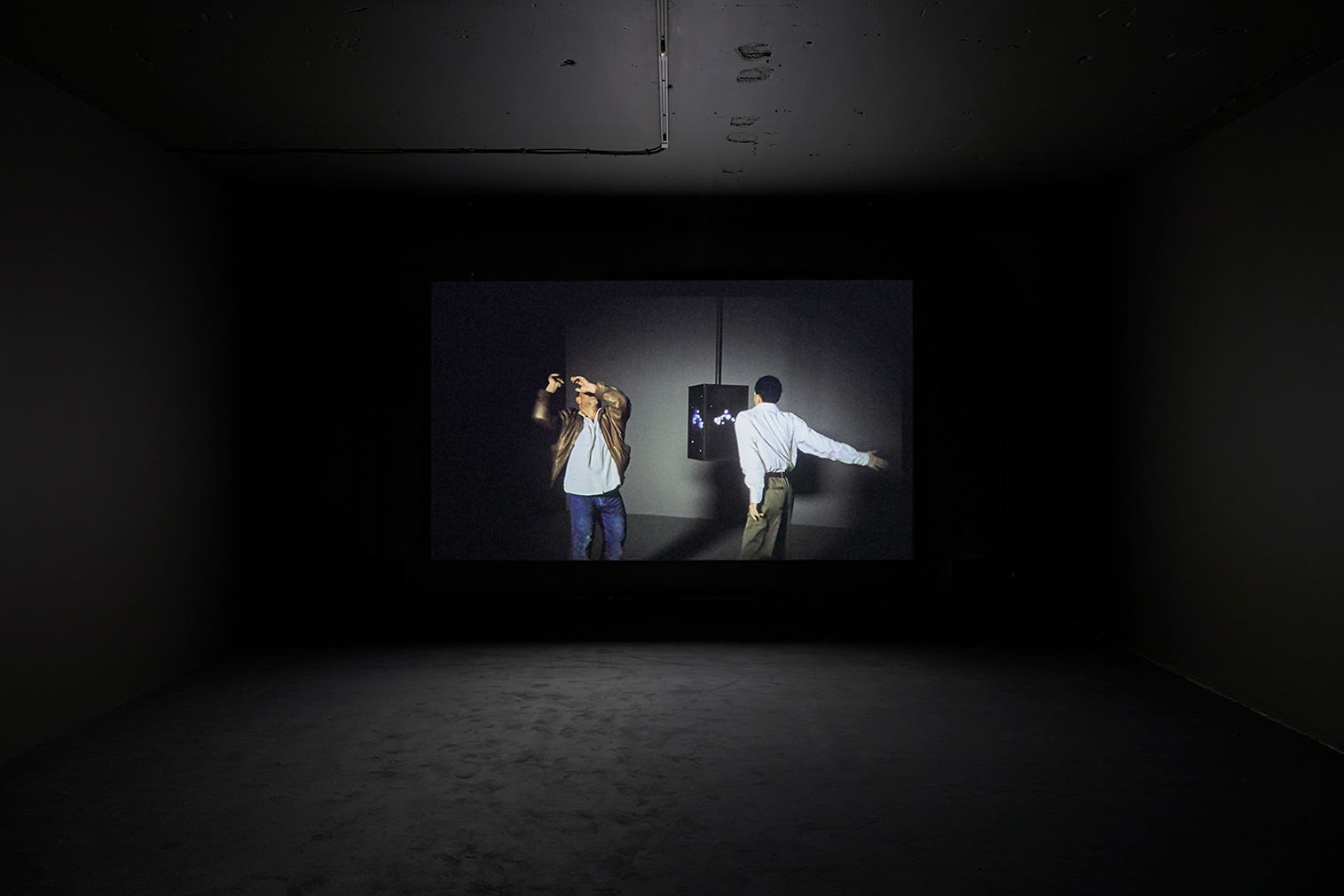
FA: How did you go about selecting the twenty-one artists featured in Strange Days?
MG: The exhibition is an anthology of video artists we have shown at the New Museum in the last ten years, since we have moved into our building on the Bowery in December 2007. But it doubles as a concise history of recent works that have redefined and transformed the ways in which artists imagine video and cinema today. I should also say there are many other artists working in film and video whom we have shown in the past ten years at the museum and who are not included in the exhibition, such as Phil Collins, Tacita Dean, Nathalie Djurberg, Sharon Hayes, Mathias Poledna, Erik Van Lieshout, Apichatpong Weerasethakul, Artur Żmijewski, and many others. It would have been simply impossible to include all of them, so this is a very personal take, and one in which the venue itself played a strong role in suggesting some of the inclusions and the dialogues between the works.
FA: Did the architecture of The Store X influence the show?
MG: The Store X always made me think of one of David Cronenberg’s first films, Stereo (1969), which is set in a Brutalist building in Toronto and imagines a future in which the Canadian Academy for Erotic Inquiry performs brain surgery on a group of volunteers whose power of speech is removed to enhance their telepathic abilities. It is a science fiction movie in which there is no sense of time because all the action is set inside, and the architecture turns into a mirror image of the minds of the patients and of the bizarre theories of the doctor. The movie, just like the architecture of The Store X itself, is a kind of Piranesian fantasy, in which Roman ruins have been substituted by industrial archaeology and 1960s architecture. For this show we are using the ground floor of the building and two subterranean levels that seemed particularly appropriate to the crepuscular atmo-spheres of some of the works in the exhibition. We tried to treat the space as a kind of continuous subjective view, like in those video games where you walk into a tunnel and space seems to develop as you advance: the spaces feel somewhat basic, but they are clean and simple like a digital rendering. You can only walk forward as though the spaces keep growing and repeating themselves.
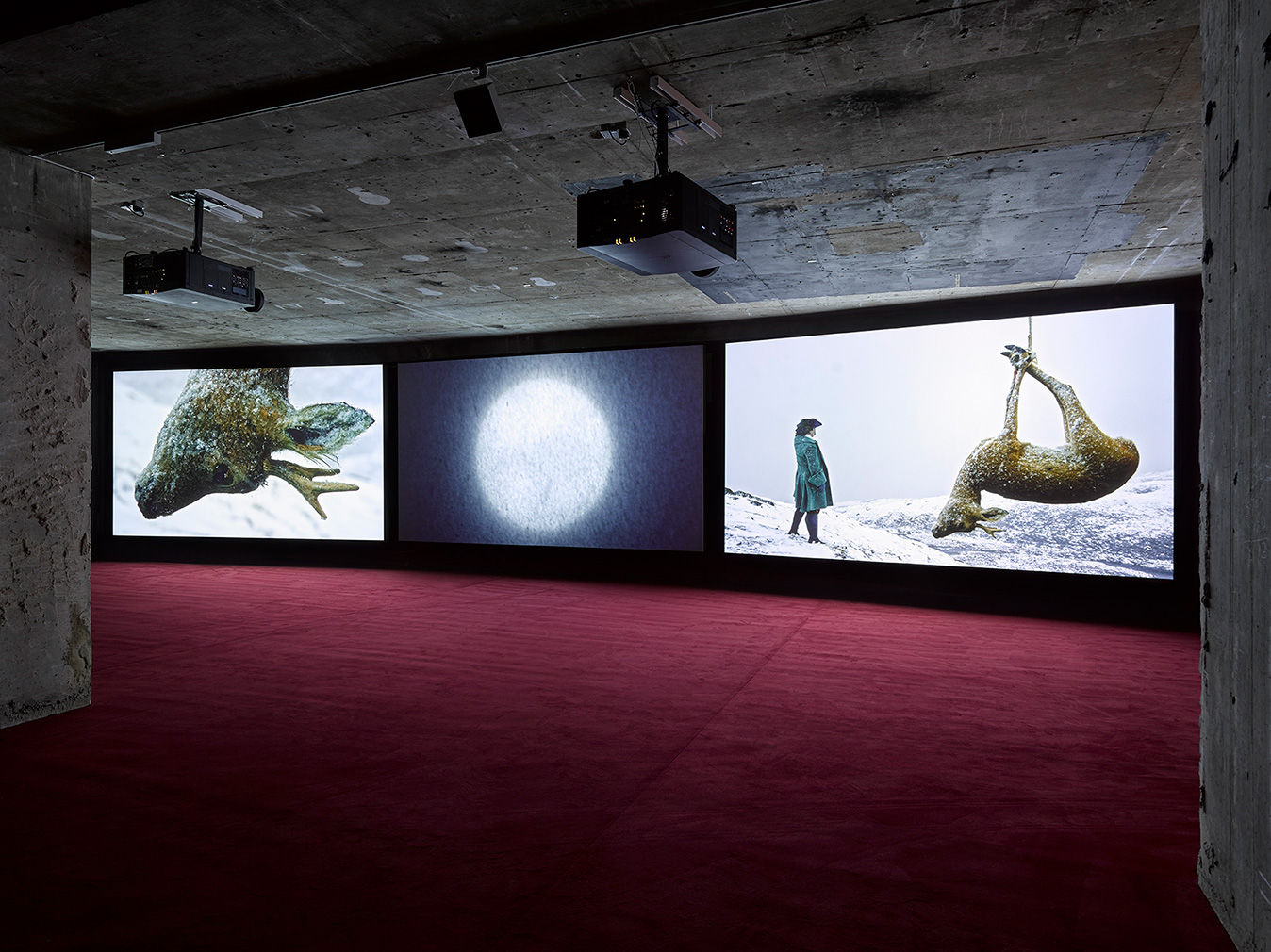
FA: The title of the exhibition is also quite futuristic, referencing Kathryn Bigelow and James Cameron’s science fiction movie Strange Days from 1995.
MG: The movie is about a not-so-distant future, actually at the turn of the millennium, in which people traffic in images filmed in subjective view, and get high on other people’s experiences. It is sadly so prescient that it doesn’t even appear visionary any longer: if anything, it actually feels a little dated, because it got everything right … That’s why I thought of adding the subtitle, ‘Memories of the Future,’ which is borrowed from the short story by Sigizmund Krzhizhanovsky, a Russian writer whose work I really like. His magical realist stories, with their oneiric atmospheres and the haunting presence of memories, seemed to resonate with many of the works in the show.
FA: What would you say the exhibition is about?
MG: Many works in the exhibition are preoccupied with how to capture memories and how to create visions of the future. More broadly, among the many threads that are woven in the show, there is an interest in the question of truth in representation. Put this way, it sounds perhaps too ambitious. But what I mean is that many of the works on view seem to make direct reference to the language of the film essay and of cinema verité, and to the traditions of reportage and documentary, which many contemporary artists are transforming and making more subjective and personal.
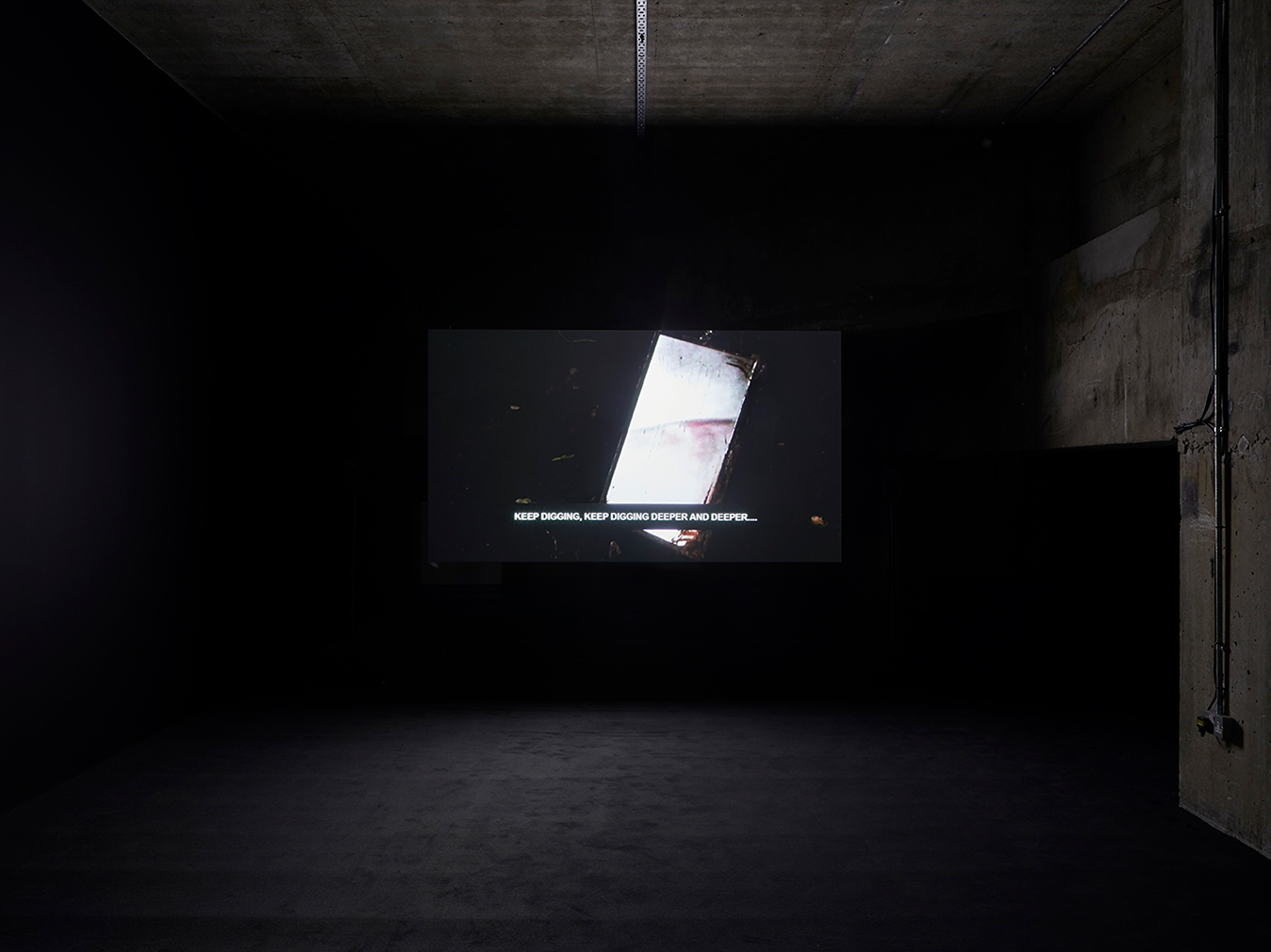
‘Strange Days: Memories of the Future’ runs until 9 December at The Store X, 180 The Strand, London WC2R. Read the full interview in the accompanying book, available to buy at The Store X or via email at books@thestores.com.
Read next: 11 entrancing London art installations to experience this autumn

















